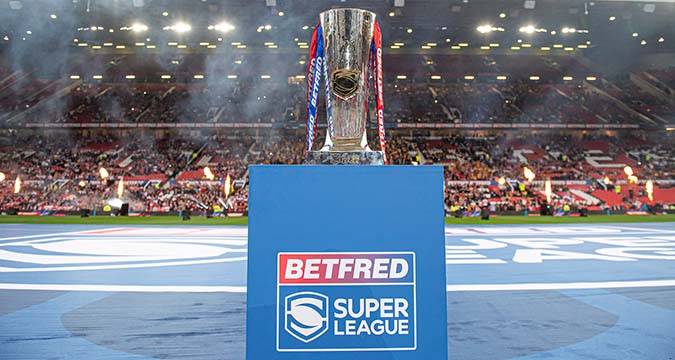
[ad_1]
League Express editor MARTYN SADLER considers the limited branding success of rugby league.
IN THE modern commercial world, having a vibrant brand identity is often the key to success, giving added value to a product and ensuring that consumers will pay premium prices for it.
And that message is just as true in the sporting world as it is in any other aspect of commercial life.
When IMG were appointed as a consultant to RL Commercial, developing a brand strategy was one of the elements of their expertise that they were going to apply in developing the profile of rugby league.
If I can interpret what they have done so far, it seems that they have helped the clubs refine their digital identity on social media.
But have they had any impact on the wider game as we see it being played?
It doesn’t appear so.
Look at any Super League game, whether you attend live or watch the game on television. Do you see anything that tells you what you are watching if you don’t already know.
Our games are usually played on bare pitches with no Super League or other logos. Super League kits worn by the players lack any uniformity of design.
They do at least carry the Betfred Super League logo on their players’ shoulders. But that logo is often overshadowed by the various sponsors’ names and logos, which often seem to clutter up shirts and effectively cheapen them.
And our clubs don’t give out a consistent message about their own branding, with change strips, for example, that don’t accord with their established colours.
So in other words, Super League branding is either non-existent at worst, or messy and unclear at best.
But can anything be done to make things better?
I’m not sure it can, given that the leading officials of the RFL and RL Commercial have very little power to instruct the clubs to do anything that they would perceive as damaging their short-term interests.
The clubs appear to have the power of veto, as we’ve seen with their refusal to countenance doing away with Super League loop fixtures, for example.
If we had a sensible governance structure in rugby league, the clubs wouldn’t have that power. Instead their interests would be subservient to the interests of the competition as a whole.
But the chances of that happening are zero and so we will never see any meaningful change.
That, of course, contrasts with some other major sporting competitions around the world.
There’s little doubt in my mind that the sporting body that best exploits its own brand value is the NFL.
I’m not a great spectator of American Football, which to my taste is too highly structured and is insufficiently continuous.
But then what do I know?
The NFL persuades millions of people to follow it in the United States and a growing number of people to follow it elsewhere in the world.
For example, for many years now the NFL has been filling Wembley Stadium and Tottenham Hotspur Stadium with regular-season matches they have been bringing to the UK and they are now planning to take a game to Australia, to either Sydney or Melbourne.
And of course I think we can all be sure that they will fill either Accor Stadium in Sydney or the Melbourne Cricket Ground when they eventually do arrive in Oz.
That’s because the NFL is a powerful marketing force that excels at engaging fans and has established a worldwide brand, branching out from its origins in the United States.
The NFL’s success can be largely attributed to its strong dedication to branding. It maintains a consistent identity across all platforms and various forms of media.
The NFL logo is to the forefront in various forms, both on matchday and in merchandise, commercials, and YouTube videos. Historically it has played a significant role in strengthening the NFL’s image and values.
Rugby league, of course, doesn’t have the vast marketing resources that are available to the NFL.
But the important lesson for our sport is that consistency is crucial. It’s important for any brand identity to be consistent and cohesive.
The NFL ensures that every part of its operation reflects its brand image, which helps it connect with fans all over the world, making them feel part of a wider sporting family.
The presentation of NFL games lays out that branding for all to see.
The stadium, the pitch, the teams, the uniforms and the TV or streaming presentation give out the NFL message so that we can’t be in no doubt about what we are watching.
The game itself doesn’t thrill me but I can only marvel at the way it’s presented and the crowds and audiences it generates.
I wonder what the NFL would make of rugby league in this country.
First published in Rugby League World magazine, Issue 501 (October 2024)
Click here to subscribe to the print edition of Rugby League World
Click here for the digital edition available from Pocketmags.com to read on your computer, tablet or smartphone
[ad_2]
Copyright for syndicated content belongs to the linked Source link

